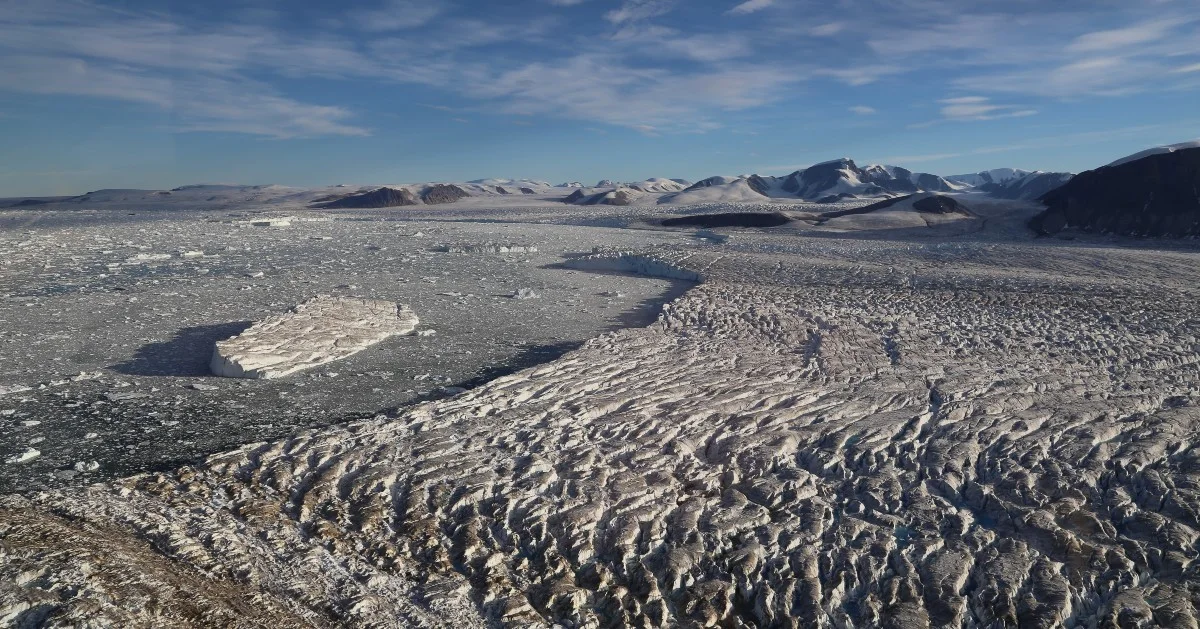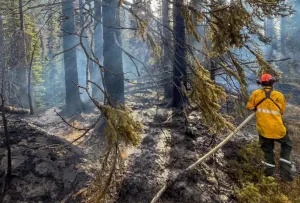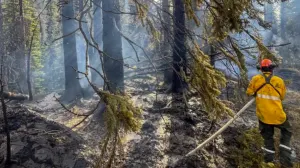
Global glacier retreat measured for the first time in new study
Some of this melting ice includes glaciers that were formed during the last ice age.
Virtually all glaciers in the Northern Hemisphere have shrunk over the past 20 years, new research reveals.
The first-ever detailed analysis of every glacier in the Northern Hemisphere that ends in the ocean has found that 85 per cent had shrunk in size, 12 per cent were roughly the same, and 3 per cent grew slightly.
“Of the 1704 glaciers that ended in the ocean in the year 2000, a total of 123 of them no longer met the ocean in 2020 due to retreat,” said Will Kochtitzky, PhD candidate in the Department of Geography, Environment and Geomatics at the University of Ottawa.

Matusevich Ice Shelf, Russia, was the ice mass with the largest loss outside of Greenland as it lost 160 km2 between 2000 and 2020. The ice shelf broke up in 2012. (Will Kochtitzky/ Landsat 7 and 8/ USGS)
Kochtitzky, and Luke Copland, University research chair in Glaciology at University of Ottawa, manually examined satellite imagery to map the glaciers and measure their retreat for the first time. Until now no one even knew how many glaciers reached the oceans.
The few glaciers that defied the odds and advanced instead of retreating, were mainly the result of “internal instabilities called surge events.” This causes a glacier to move 10 to 100 times faster than normal for a few years. This eventually reverses over time resulting in an “overall retreat in the long term” said Kochtitzky.
In the past 20 years, some 390 square kilometres of glacier ice has been melting away each year. In other words, every 19 months the amount of ice being melted was enough to wet the feet of every person living in the city of Toronto.
Some of this melting ice is thousands of years old as these glaciers were formed during the last ice age, said Kochtitzky.

Jakobshavn Glacier, Greenland, has rapidly retreated over the past 20 years, producing large numbers of icebergs that are seen here outside of Ilulissat, Greenland, in June 2015. (Luke Copland/ University of Ottawa)
The retreat of the world’s glaciers is a direct result of ever hotter temperatures produced mainly by emissions from the use of fossil fuels. However, local topographic and environmental conditions are important in explaining why some glaciers retreated more than others.
Understanding what’s happening with glaciers and ice sheets enables better predictions of the rate of sea level rise and how high it may be, said Kochtitzky. “Sea level rise will have a big impact around the world.”

Zachariae Isstrøm, NE Greenland, has lost more area than any other glacier in the Northern Hemisphere since 2000 due to the loss of its ice shelf. (Will Kochtitzky with image from Landsat 8/ USGS)
Glaciers may not have quite as big an impact on sea-level rise as feared, according to a recent study in Nature Geoscience.
In another first, the speed of movement and the thickness of ice for every mountain glacier in the world — more than 250,000 in all — has been measured. Researchers at the Institute of Environmental Geosciences (IGE) in France and Dartmouth College in the U.S. say there is less ice in the world’s glaciers than previous estimates.
There is 20 per cent less ice available to add to sea level rise said co-author Mathieu Morlighem, a glaciologist at Dartmouth. That means that if all glaciers melt the resulting sea level rise will be around 25 cm instead of 33 cm. This does not include the contribution from the two large ice sheets of Greenland and Antarctic which have multi-meter sea level rise potential, ranging from two meters to six meters if global temperatures reach 3°C.
The study also showed that Asia’s Himalayan Mountains were found to have over one-third more ice than previous estimates. This is an important finding because those glaciers supply fresh water for some 1.3 billion people.
However, there is far less ice than expected in South America’s tropical Andes Mountains. The finding means that there is up to 23 per cent less freshwater stored in an area from which millions of people depend, said Morlighem.
“The study shows they have less time than they thought to adapt to the loss of this vital water source,” he said.
Thumbnail credit: Luke Copland/ University of Ottawa










